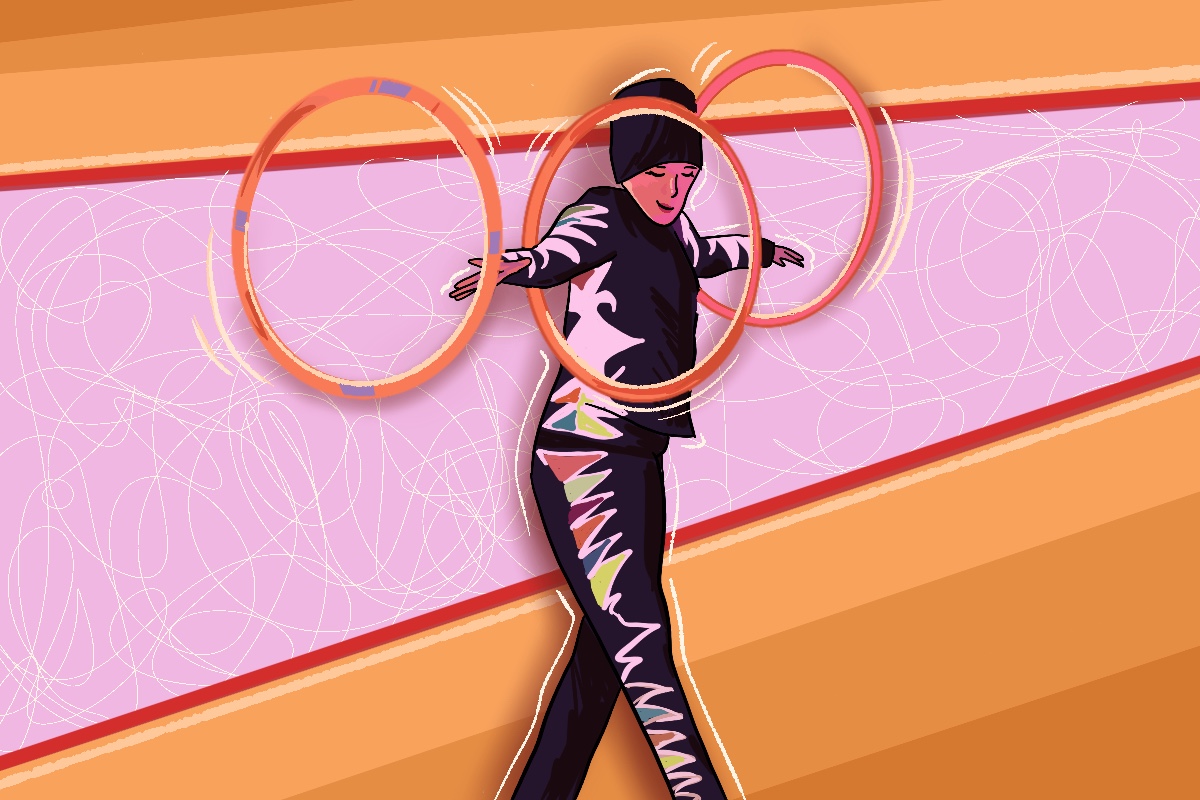The only active urban sugar shack in North America housed Indigenous Franco-Ontarian creatives celebrating unique manifestations of identity at the 39th Vanier Sugar Festival.
“It’s really important for us to showcase local, emerging artists who are predominantly francophone, but also Indigenous,” said Sophia Conradie, one of the festival’s organizers.
Held at Richelieu Park from March 18 to 24, Conradie said the event’s mission was “to celebrate all things maple syrup […] and to showcase francophone history, heritage and culture.”
Throughout the week, several greater Ottawa area schools visited the festival to participate in educational activities and watch musical performances.
On the weekend, spectators in the main tent enjoyed live francophone entertainment while eating a traditional sugar shack meal: scrambled eggs, sausages, potatoes, maple baked beans and pancakes. Outdoor activities such as a petting zoo, painting, axe-throwing, maple sugar sampling and booths also enhanced the visit.
Anishinaabe hoop dancer Makhena Rankin-Guérin performed three times throughout the festival. From Abitibiwinni First Nation, they were joined by their younger brother Caleb, also known as Makwa, who DJ’d contemporary Indigenous music for her first performance.
Rankin-Guérin said she felt conflicted about her Franco-Ontarian identity for a long time
“I felt I would be disrespecting my Indigenous culture in a certain way by honoring my Franco-Ontarian heritage,” she said. “But lately, I’ve been really finding a balance and I’ve been really at peace with honouring both of my cultures.”
“I like to think that we take all the best qualities of both cultures and mix them together,” said Daniel Richer dit LaFlèche, a Dakota and Abenaki master of ceremony and storyteller at the festival.
Richer dit LaFlèche said it was especially important to include Indigenous artists to recognize the festival’s location.
“We’re on Anishinaabe land, so it’s only normal that we invite Anishinaabe ambassadors,” he said.
Given Vanier’s significant Indigenous population, Conradie added the festival organizers wished to highlight Indigenous artistry.
“We’ve built a really good community here in Ottawa, because it seems to be the melting pot of Indigenous peoples from all over the place,” said Marc Forgette, founder of Makatew Workshops and a French Algonquin member of the Apitipi Anicinapek Nation.
Located in Carp, Ont., Makatew Workshops leads educational workshops that embrace Indigenous cultural heritages.
Rankin-Guérin said non-Indigenous spectators can also benefit from the sugar festival’s representation of various artists.
“It’s a way to show the beauty of the culture and to dismantle certain negative stereotypes that colonization puts on Indigenous people,” they said.
By leading an artifact demonstration booth at the festival, Forgette said his goal was to facilitate learning.
“I’m giving [attendees] a whole lot of tidbits today, so hopefully when they attend their first powwow, they’re comfortable enough to ask questions, go to the vendors [and] purchase from the vendors,” he said.
Forgette said it’s particularly important to have Indigenous representation at a sugar festival.
“Maple syrup is truthfully, as Indigenous people, part of our culture. We shared that with the Europeans,” he said. “I think having us here is great, because people want to learn about our beautiful culture.”
Graphic by Alisha Velji/the Charlatan.






